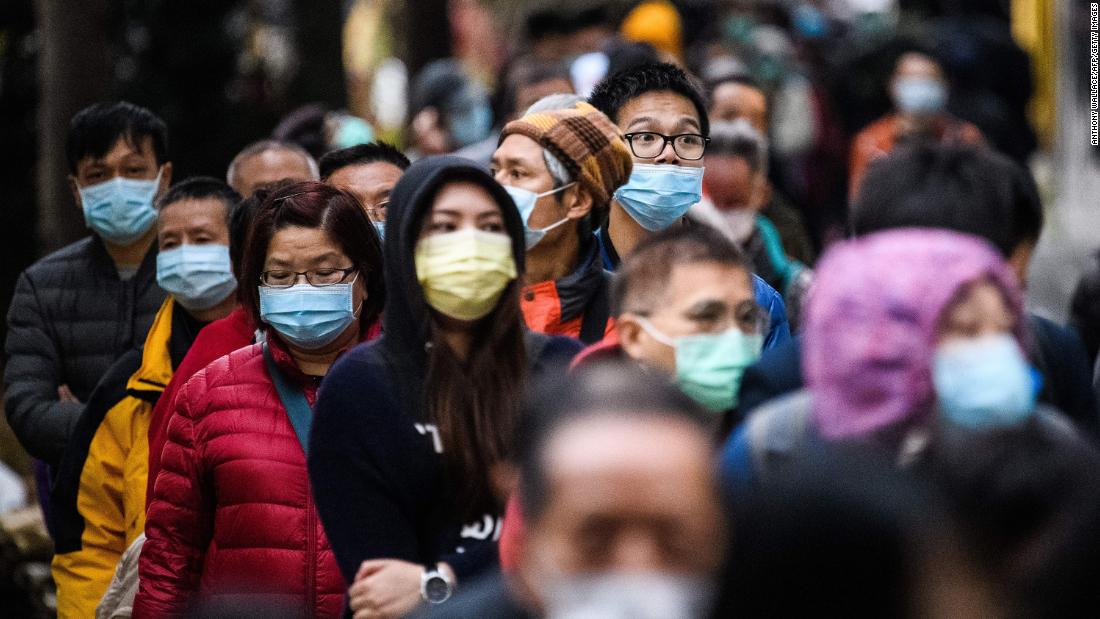But now, the fast-spreading coronavirus, which has sickened more than 30,000 and killed more than 600 people,
is threatening global growth. Supply chains have been disrupted, air travel has slowed, and shipping has taken a hit as Beijing has put entire cities on lock down.
It’s hard to know what the impact could be on the US economy.
“At this point in time, I think the economic impact will be somewhat minimal,” said Beth Ann Bovino, the US chief economist at S&P Global. One reason is because the US economy is primarily driven by domestic activity, which accounts for 85% of all economic activity, she said.
Goldman Sachs estimated
it could take 0.4% off US GDP through March
— but the bank also forecasts a rebound in the second quarter, potentially triggering a boomlet that could help Trump just as general election voters start to tune in.
Here’s where things could get ugly for the US economy in the short term:
Falling oil prices
The spread of the coronavirus has
already hit demand for oil, clobbering prices — a problem for US producers, which are clustered in red states like Texas, Alaska and North Dakota, as well as purple states like New Mexico where Trump lost in the 2016 election.
In 2019, China’s oil demand made up about 14% of the world market and accounted for half of world oil demand growth, according to IHS Markit.
Plus, demand for jet fuel has also taken a hit because major airlines have suspended all flights to and from mainland China.
But it remains unclear if prices will remain low as the health crises continues. OPEC could decide to cut oil production,
but has yet to decide on a plan.
Agricultural purchases
American farmers were hopeful that the preliminary, “phase one” trade deal reached with China last month could return some certainty to their export markets, which were rocked by Trump’s trade war.
In the agreement, China agreed to step up its purchases of US goods and agricultural products. But analysts were skeptical those commitments could be met, and the health crisis brings more doubt. Farmers could be waiting longer to see big orders for soybeans and corn coming from China.
While some farmers, a key constituency for Trump, have expressed frustration with the ongoing trade war with China, others have stuck by him and believe they’ll benefit in the long-term.
To help them get by in the short-term, and to shore up political support, the President drew up two massive aid packages for farmers hurt by the tariffs. Together, they’re worth $28 billion, or about double the final cost of the 2009 auto bailout after the financial crisis.
Washington officials earlier this week
said the outbreak could delay some of those exports.
“It is true the ‘phase one’ trade deal, the export boom from that trade deal, will take longer because of the Chinese virus,”
said Larry Kudlow, Trump’s chief economic adviser, in an interview with Fox Business on Tuesday.
But, in what could be a sign that Beijing is committed to following through on its commitments, China announced this week that it would
halve additional tariffs on $75 billion worth of US imports.
Supply chain disruption
Factories have shut down across China, creating uncertainty for American companies that rely on Chinese suppliers. It’s unclear when those factories will reopen.
“People are bracing for some supply chain implications and are trying to understand what that’s going to be,” said Steve Lamar, president of the American Apparel and Footwear Association.
The impact is lessened, for now, because factories would have been shutdown for a week anyway because of the Lunar New Year. But if shipments of materials end up being delayed, it can have a ripple effect throughout the manufacturing process.
For now, Lamar said, most of his members are in a holding pattern. They’re worried about keeping their workers healthy and safe. They’re also worried about a rumor that disease can be spread through packaging shipped from China. The CDC says there is “likely very low risk” of that happening.
In addition to clothing and footwear, the smart phone and
auto industries are heavily reliant on manufacturing in China. Qualcomm, which makes smart phone chips, has already lowered its earnings guidance for next quarter
in part due to the virus outbreak in China. General Motors and many other automakers have factories in Wuhan which has been on lock down since late January.
Weaker Chinese consumer demand
If Chinese consumers are staying home, it could hurt American companies doing business in China.
By the end of January,
Starbucks had already closed more than half of its more than 4,000 Chinese locations. Apple
temporarily closed its 42 stores in China, too.
Nike, Adidas, and Capri Holdings, which owns Versace, Jimmy Choo and Michael Kors, have also warned investors
that they could take a hit if demand from China slumps.
Hits to tourism
The Trump administration is currently restricting entry into the United States from China, and Americans who have visited China within
the last 14 days are screened for symptoms. Even if they show no signs of having the disease, they are asked to “self-quarantine” inside their home.
This is already hurting airlines. American Airlines and United Airlines have suspended flights to and from China until late March, and Delta has canceled flights until April 30.
It could also hurt restaurants and stores that benefit from Chinese tourism. More than 2.5 million Chinese visited the United States last year.























